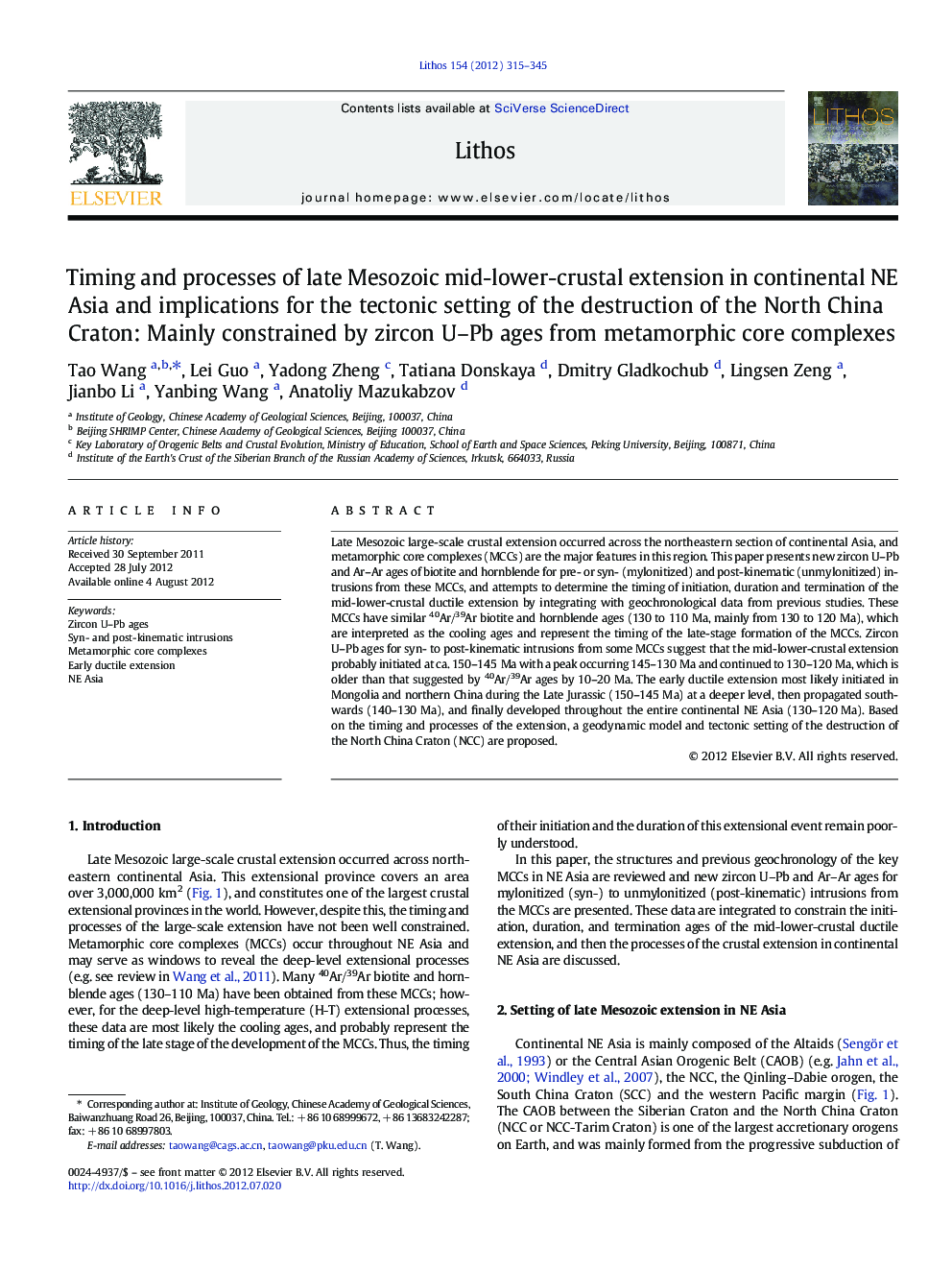| کد مقاله | کد نشریه | سال انتشار | مقاله انگلیسی | نسخه تمام متن |
|---|---|---|---|---|
| 4716413 | 1638699 | 2012 | 31 صفحه PDF | دانلود رایگان |

Late Mesozoic large-scale crustal extension occurred across the northeastern section of continental Asia, and metamorphic core complexes (MCCs) are the major features in this region. This paper presents new zircon U–Pb and Ar–Ar ages of biotite and hornblende for pre- or syn- (mylonitized) and post-kinematic (unmylonitized) intrusions from these MCCs, and attempts to determine the timing of initiation, duration and termination of the mid-lower-crustal ductile extension by integrating with geochronological data from previous studies. These MCCs have similar 40Ar/39Ar biotite and hornblende ages (130 to 110 Ma, mainly from 130 to 120 Ma), which are interpreted as the cooling ages and represent the timing of the late-stage formation of the MCCs. Zircon U–Pb ages for syn- to post-kinematic intrusions from some MCCs suggest that the mid-lower-crustal extension probably initiated at ca. 150–145 Ma with a peak occurring 145–130 Ma and continued to 130–120 Ma, which is older than that suggested by 40Ar/39Ar ages by 10–20 Ma. The early ductile extension most likely initiated in Mongolia and northern China during the Late Jurassic (150–145 Ma) at a deeper level, then propagated southwards (140–130 Ma), and finally developed throughout the entire continental NE Asia (130–120 Ma). Based on the timing and processes of the extension, a geodynamic model and tectonic setting of the destruction of the North China Craton (NCC) are proposed.
► U–Pb zircon ages combined with Ar–Ar ages from MCCs are used to constrain mid-lower-crustal extension in NE Asia.
► The extension initiated at ca. 150–140 Ma and reached the peak at 130–120 Ma and continuing to 130–120 Ma.
► The extension migrated southward.
► The extension is due to post-orogenic collapse of the thickened crust.
► Destruction of NCC was part of the reactivity of whole NE Asia.
Journal: Lithos - Volume 154, 1 December 2012, Pages 315–345